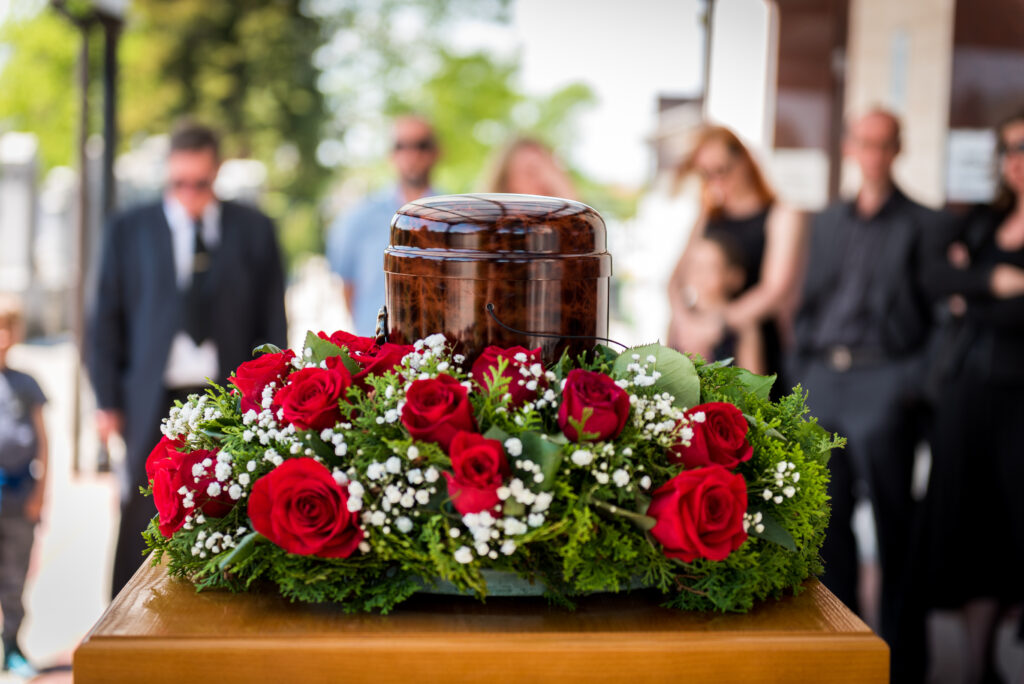
Are you faced with the challenging task of planning a funeral? We understand that this process can be overwhelming and emotionally draining. That’s why we’ve created this comprehensive guide to help simplify and demystify the funeral planning process. Our goal is to provide you with the information and guidance you need to honor your loved one in a meaningful way while alleviating some of the stress and burden.
1. Understanding Funeral Options
At the core of funeral planning is understanding the different options available to you. By familiarizing yourself with the choices and processes involved, you can make informed decisions that align with your loved one’s wishes and your own preferences. Here are some key considerations:
Traditional Funeral vs. Personalized Celebration
A traditional funeral typically involves a formal ceremony held at a church, funeral home, or another designated location. It often includes elements such as a eulogy, music, and the presence of the deceased in a casket. On the other hand, a personalized celebration of life allows for more flexibility and creativity in honoring the individual’s unique personality and interests.
Burial or Cremation
One of the primary decisions to make is whether you prefer burial or cremation. Burial involves interring the body in a cemetery, while cremation transforms the body into ashes. Both options have their own considerations, such as the choice of a casket or an urn, and the final resting place for the remains.
Funeral Service Components
Consider the various components that make up a funeral service. These may include selecting an officiant, choosing readings, songs, and prayers, and deciding whether a viewing of the deceased will take place. Additionally, you may want to incorporate special elements like personalized tributes, open mic sharing, or symbolic gestures.
2. Financial Planning and Budgeting
Funerals can be costly, but there are ways to manage expenses without compromising the quality of the service. Set a budget that aligns with your financial capabilities and explore cost-saving options. Here are some tips to help you navigate the financial aspect of funeral planning:
Research Average Funeral Costs
Take the time to research the average costs associated with funerals in your area. This will give you a baseline understanding of what to expect and help you make more informed decisions about budget allocation.
Explore Financial Assistance Options
If you’re facing financial constraints, look into potential sources of financial assistance. Some options include government programs, veterans’ benefits, and crowdfunding platforms for funeral expenses. Additionally, consider discussing flexible payment plans with funeral service providers.
Consider Funeral Insurance and Prepaid Funeral Plans
Funeral insurance and prepaid funeral plans can provide financial security and peace of mind. Funeral insurance policies ensure that funds are available to cover funeral expenses, while prepaid funeral plans allow you to make arrangements and pay for them in advance. Evaluate these options based on your individual circumstances and preferences.
3. Essential Steps Immediately After the Passing
When a loved one passes away, there are certain immediate steps you need to take. These include:
Confirming the Death and Obtaining Necessary Documents
A doctor or medical professional must confirm the death and issue a Medical Certificate Cause of Death. This certificate is required for legal purposes and must be taken care of promptly. If the death is unexpected or under specific circumstances, it may involve a coronial investigation.
Organ Donation Considerations
If your loved one expressed a desire to be an organ donor or if you believe it is an option worth exploring, you should contact the appropriate organ donation organization as soon as possible. They will guide you through the process and help facilitate the donation if it is feasible.
Locating a Will and Funeral Plan
Check if the deceased had a will or a funeral plan in place, hopefully your loved one had a will with Gentreo and shared access to that executed will. These documents may contain specific instructions and preferences for the funeral arrangements. If a will exists, the designated executor will be responsible for overseeing the funeral planning process.
Notifying Friends and Family
Notify friends and family members about the passing of your loved one. This can be done through personal calls, emails, or even placing an obituary notice in local newspapers or online platforms. Reach out to close friends and ask for their support in notifying others.
4. Making Funeral Arrangements
Once you have completed the immediate steps, it’s time to focus on the funeral arrangements. This involves a series of decisions related to the funeral service itself:
Choosing a Funeral Service Type
Consider the type of funeral service that best aligns with your loved one’s wishes and your own preferences. Options include traditional funerals, personalized celebrations of life, memorial services, or even non-traditional alternatives that reflect the individual’s unique personality.
Selecting a Venue and Officiant
Choose a venue for the funeral service, such as a church, funeral home, or another meaningful location. Select an officiant who will lead the ceremony and ensure that their beliefs and approach resonate with your vision for the service.
Personalizing the Service
Personalization is key to creating a meaningful and memorable funeral service. Consider incorporating elements that reflect your loved one’s interests, hobbies, and values. This can include selecting specific readings, music, or even displaying photographs and cherished mementos.
Arranging for the Body
Decide whether you want a viewing of the body and if embalming is necessary. If a viewing is desired, coordinate the logistics with the funeral home. If embalming is not preferred, alternative options can be explored, such as refrigeration or immediate burial or cremation.
Choosing a Coffin or Urn
Select a coffin or urn that honors your loved one’s preferences and fits within your budget. Funeral homes typically offer a range of options to choose from, including various materials, designs, and price points.
5. Funeral Service Details
As you plan the funeral service, pay attention to the finer details that will make the event meaningful and reflective of your loved one’s life:
Appearance and Presentation
Consider how you want your loved one to be presented during the funeral service. This includes decisions related to clothing, makeup, and overall appearance. Coordinate with the funeral home to ensure your preferences are met.
Floral Arrangements and Decoration
Choose appropriate floral arrangements and decorations to enhance the ambiance of the funeral service. This can include floral displays, wreaths, or other meaningful decorations that reflect your loved one’s personality and preferences.
Music and Media
Select music or media elements that hold significance for your loved one or that evoke the desired atmosphere for the service. This can include playing their favorite songs, showcasing a slideshow of memorable photos, or even incorporating video tributes.
Wake and Reception
Decide whether you want to have a wake or a reception following the funeral service. This allows friends and family to gather, share memories, and provide support to one another during this challenging time. Consider potential venues, catering options, and any special arrangements you may want to make.
Managing Costs
Funerals can be expensive, but there are ways to manage costs effectively. Request an itemized invoice or quote from the funeral home to understand the breakdown of expenses. This will help you identify areas where you can potentially reduce costs or explore alternatives.
6. After the Funeral
Once the funeral service has taken place, there are several post-funeral tasks to address:
Non-Urgent Notifications
Take the time to notify individuals and organizations that may not require immediate notification. This can include employers, insurance companies, banks, and other relevant parties. Gather the necessary documentation, such as death certificates, to support these notifications.
Scattering Ashes or Final Interment
If you have chosen cremation, you may need to make arrangements for scattering the ashes or selecting a final resting place. Consider the preferences and wishes of your loved one, as well as any legal requirements or permits necessary for the chosen location.
Grief Support and Counseling
Grief is a natural part of the mourning process, and it’s essential to seek support during this time. Reach out to grief counseling services, support groups, or helplines that can provide guidance and emotional support. Remember, you don’t have to navigate this journey alone.
Conclusion
Planning a funeral is a deeply personal and emotionally challenging process. By understanding the various options, making informed decisions, and seeking support when needed, you can create a meaningful and heartfelt tribute to your loved one. Remember to take care of yourself and lean on the support of friends, family, and professionals who can guide you through this difficult time.







